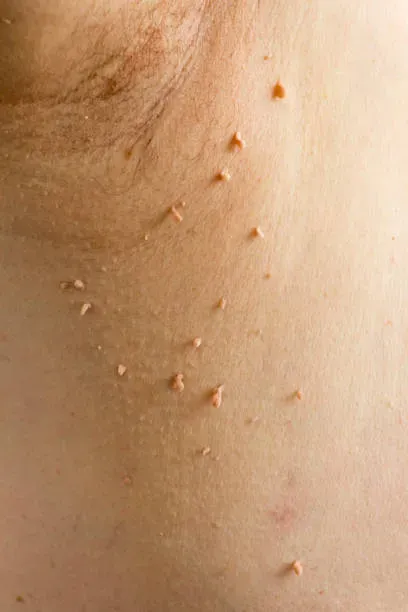Skin tags, also known as acrochordons, are small, soft, skin-colored, or slightly brown growths that often appear on the neck, armpits, eyelids, or groin. While they are typically harmless, they can be unsightly and sometimes irritating.

Understanding Skin Tags
Skin tags are benign growths that occur when skin cells grow in a cluster. They are more common in older adults and individuals with diabetes or obesity.
When to Consider Removal
While skin tags are generally harmless, you may consider Skin Tag Removal Dubai if:
- They are irritating or bothersome: Skin tags can become irritated, especially when caught on clothing or jewelry.
- They are in a visible area: If skin tags are located in a visible area, such as the neck or eyelids, they may affect your self-confidence.
- They are increasing in size or number: While rare, skin tags can sometimes grow larger or multiply.
Skin Tag Removal Methods
There are several methods for removing skin tags:
- Cryotherapy: This involves freezing the skin tag with liquid nitrogen, causing it to fall off within a few days.
- Cauterization: A heated instrument is used to burn the skin tag, causing it to dry and fall off.
- Clipping: A sterile instrument is used to clip the skin tag at its base.
- Laser Removal: A laser is used to vaporize the skin tag.
Choosing a Healthcare Provider
It’s important to choose a qualified healthcare provider, such as a dermatologist or a qualified medical professional, to remove skin tags. They can assess the skin tags, determine the best removal method, and minimize the risk of complications.
Post-Treatment Care
After skin tag removal, it’s essential to follow post-treatment care instructions:
- Keep the area clean and dry: Avoid touching or picking at the treated area.
- Apply antibiotic ointment: This can help prevent infection.
- Avoid sun exposure: Protect the treated area from the sun to prevent scarring.
- Monitor for signs of infection: Look for redness, swelling, or pus.
Potential Risks and Complications
While skin tag removal is generally a safe procedure, there are potential risks and complications, including:
- Bleeding: Minor bleeding may occur during or after the procedure.
- Infection: Proper aftercare is essential to prevent infection.
- Scarring: In some cases, scarring may occur, especially if the skin tag is large or located in a sensitive area.
Conclusion
Skin tag removal is a relatively simple procedure that can be performed in a doctor’s office. By choosing a qualified healthcare provider and following post-treatment care instructions, you can minimize the risk of complications and achieve a successful outcome.



